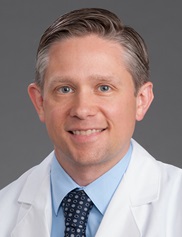Grants Funded
Grant applicants for the 2024 cycle requested a total of nearly $3 million dollars. The PSF Study Section Subcommittees of Basic & Translational Research and Clinical Research evaluated more than 100 grant applications on the following topics:

The PSF awarded research grants totaling over $650,000 dollars to support more than 20 plastic surgery research proposals.
ASPS/PSF leadership is committed to continuing to provide high levels of investigator-initiated research support to ensure that plastic surgeons have the needed research resources to be pioneers and innovators in advancing the practice of medicine.
Research Abstracts
Search The PSF database to have easy access to full-text grant abstracts from past PSF-funded research projects 2003 to present. All abstracts are the work of the Principal Investigators and were retrieved from their PSF grant applications. Several different filters may be applied to locate abstracts specific to a particular focus area or PSF funding mechanism.
Mandibular Reconstruction Using Allograft Revitalization
Christopher Runyan MD, Phd
2014
University of Cincinnati
Pilot Research Grant
Cranio / Maxillofacial / Head and Neck
The purpose of this research study is to look at the safety and effectiveness of a less invasive way
to reconstruct mandible defects. Defects of the mandible may happen because of injury, infection,
or tumors. When these defects are large, the preferred option for their reconstruction is moving
bone from elsewhere in the body to fill the defect, an operation known as a bone free flap. Although
generally effective, these free flaps are difficult to perform and often have complications at either
the donor or recipient site. This study will examine whether bone from a tissue/organ donor known
as ‘allograft bone', may instead be used to reconstruct mandible defects.
Preliminary studies in pigs demonstrated that under certain conditions, allograft bone was
reliably replaced with living, healthy bone. These conditions are: 1) the allograft must be wrapped in
periosteum, the thin membrane that covers bones, and helps to provide them with blood, 2) the
addition of a bone-stimulating growth factor known as Bone-Morphogenetic Protein-2 (BMP-2)
significantly enhances new bone formation within the allograft, and 3) the presence of fat tissue
obtained by liposuction may further promote bone production when combined with the allograft.
Large defects in pigs' bones were successfully repaired using this strategy, known as ‘allograft
revitalization'.
This study will examine the safety and efficacy of allograft revitalization for reconstruction of
mandibular defects in humans. Human allograft mandibles will be combined with BMP-2, fat
obtained by liposuction, and a local periosteal flap for repair of the mandible at the site of the defect.
To qualify for the study, patients must have a mandibular defect following traumatic injury, infection,
or removal of a benign tumor. Long term safety and efficacy data will be collected. If safe and
effective, allograft revitalization may provide a less-invasive and welcome alternative to using bone
free flaps for mandible reconstruction.
 Dr. Runyan was raised in Indianapolis, IN and completed his undergraduate studies in Microbiology at Brigham Young University. He then joined the Medical Scientist Training Program at the University of Cincinnati where he studied Molecular and Developmental Biology with Dr. Christopher Wylie. His doctoral dissertation was entitled ‘The importance of cell death in germ cell migration’, and helped explain the occurrence of extragonadal germ cell tumors. Upon return to medical school he was drawn to Plastic and Reconstructive Surgery in part because of the many opportunities for translational research. While completing medical school, he conducted a preliminary study under the direction of Dr. Jesse Taylor, engineering vascularized bone in a large animal model. He remained in Cincinnati for residency training in Plastic Surgery, where he continues to pursue research interests in bone tissue engineering and craniofacial development. Upon completion, he hopes to pursue an academic career in craniofacial plastic surgery.
Dr. Runyan was raised in Indianapolis, IN and completed his undergraduate studies in Microbiology at Brigham Young University. He then joined the Medical Scientist Training Program at the University of Cincinnati where he studied Molecular and Developmental Biology with Dr. Christopher Wylie. His doctoral dissertation was entitled ‘The importance of cell death in germ cell migration’, and helped explain the occurrence of extragonadal germ cell tumors. Upon return to medical school he was drawn to Plastic and Reconstructive Surgery in part because of the many opportunities for translational research. While completing medical school, he conducted a preliminary study under the direction of Dr. Jesse Taylor, engineering vascularized bone in a large animal model. He remained in Cincinnati for residency training in Plastic Surgery, where he continues to pursue research interests in bone tissue engineering and craniofacial development. Upon completion, he hopes to pursue an academic career in craniofacial plastic surgery.